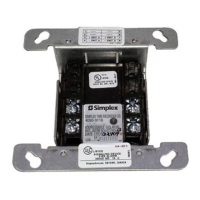What does Card 5 Fail mean on Simplex Fire Alarms?
- JJeremy EvansSep 8, 2025
If your Simplex Fire Alarms system shows 'Card 5 Fail', it means communication is lost on card 5 for more than 10 seconds, or if card 5 is configured but not connected to the control unit.



